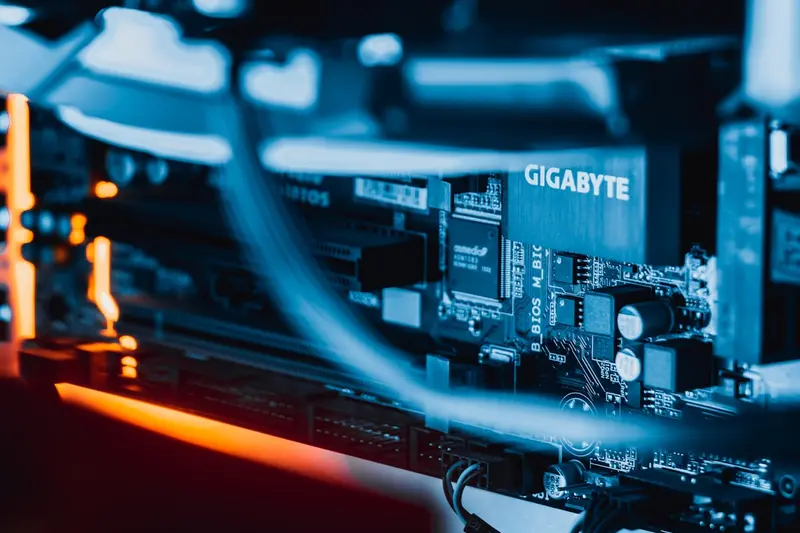⚡ System Performance Tuning: Simple Guide
Want to make your Alpine Linux system super fast? Great choice! 😊 This tutorial shows you easy ways to boost performance. Let’s make your computer lightning fast! 🚀
🤔 What is Performance Tuning?
Performance tuning means making your computer work faster and use resources better.
Performance tuning is like:
- 🚗 Tuning a car engine for better speed
- 🧹 Cleaning house to make things run smoother
- 🔧 Adjusting settings for best results
🎯 What You Need
Before we start, you need:
- ✅ Alpine Linux system with root access
- ✅ Basic knowledge of terminal commands
- ✅ About 30 minutes of time
- ✅ Willingness to learn and experiment
📋 Step 1: Check Current Performance
System Performance Check
Let’s see how your system is doing right now! 😊
What we’re doing: Checking CPU, memory, and disk usage to find problems.
# Check CPU usage
top -bn1 | head -20
# Check memory usage
free -h
# Check disk usage
df -h
# Check system load
uptime
# Check running processes
ps aux --sort=-%cpu | head -10What this does: 📖 Shows us how busy your system is right now.
Example output:
✅ CPU usage: 15%
✅ Memory usage: 45%
✅ Disk usage: 60%
⚠️ Load average: 2.5 (might be high)What this means: We found areas to improve! Let’s make it better! ✅
💡 Important Tips
Tip: Write down current numbers to compare later! 💡
Warning: Don’t change too many things at once! ⚠️
🛠️ Step 2: Optimize Memory Usage
Free Up System Memory
Let’s give your system more breathing room! 😊
What we’re doing: Cleaning up memory and optimizing RAM usage.
# Clear system cache
sync
echo 3 > /proc/sys/vm/drop_caches
# Check swap usage
swapon --show
# Optimize swap settings
echo 'vm.swappiness=10' >> /etc/sysctl.conf
echo 'vm.vfs_cache_pressure=50' >> /etc/sysctl.conf
# Apply changes
sysctl -p
# Remove unnecessary packages
apk del --purge $(apk info --installed | grep -v alpine-base)Code explanation:
echo 3 > /proc/sys/vm/drop_caches: Frees up cached memoryvm.swappiness=10: Uses swap less frequentlyvm.vfs_cache_pressure=50: Balances file cache usageapk del --purge: Removes unused packages
Expected Output:
✅ System cache cleared
✅ Memory optimization applied
✅ Unused packages removedWhat this means: Your system has more free memory now! 🎉
🎮 Let’s Try It!
Time to check the improvements! This is exciting! 🎯
What we’re doing: Measuring performance improvements after memory optimization.
# Check memory usage again
free -h
# Compare with earlier numbers
echo "Memory improvement check:"
echo "Before optimization: [your earlier number]"
echo "After optimization:"
free -h | grep MemYou should see:
✅ More free memory available
✅ Lower memory usage percentageAwesome work! 🌟
📊 Quick Summary Table
| Optimization | Action | Result |
|---|---|---|
| ⚡ Memory | Clear cache & optimize | ✅ More free RAM |
| 🛠️ Swap | Reduce swappiness | ✅ Better responsiveness |
| 🎯 Packages | Remove unused software | ✅ Less resource usage |
🎮 Practice Time!
Let’s tune more system parts! Try these examples:
Example 1: Optimize CPU Performance 🟢
What we’re doing: Adjusting CPU settings for better performance.
# Set CPU governor to performance
echo performance > /sys/devices/system/cpu/cpu0/cpufreq/scaling_governor
# Check current CPU frequency
cat /proc/cpuinfo | grep "cpu MHz"
# Optimize process scheduler
echo 'kernel.sched_migration_cost_ns=500000' >> /etc/sysctl.conf
echo 'kernel.sched_autogroup_enabled=0' >> /etc/sysctl.conf
# Apply CPU optimizations
sysctl -pWhat this does: Makes CPU work at maximum speed! 🌟
Example 2: Optimize Disk Performance 🟡
What we’re doing: Making file system faster and more efficient.
# Check current disk scheduler
cat /sys/block/sda/queue/scheduler
# Set disk scheduler to deadline
echo deadline > /sys/block/sda/queue/scheduler
# Optimize file system settings
mount -o remount,noatime /
# Enable write-back caching
echo 'vm.dirty_ratio=15' >> /etc/sysctl.conf
echo 'vm.dirty_background_ratio=5' >> /etc/sysctl.confWhat this does: Makes file access much faster! 📚
🚨 Fix Common Problems
Problem 1: System Still Slow ❌
What happened: Optimizations didn’t help much. How to fix it: Check for resource-heavy processes!
# Find CPU-hungry processes
ps aux --sort=-%cpu | head -5
# Find memory-hungry processes
ps aux --sort=-%mem | head -5
# Kill unnecessary processes
killall [process_name]Problem 2: High Load Average ❌
What happened: System load is still too high. How to fix it: Reduce number of running services!
# Check enabled services
rc-status
# Disable unnecessary services
rc-update del [service_name]
# Check system load again
uptimeDon’t worry! Performance tuning takes practice. You’re learning! 💪
💡 Simple Tips
- Monitor regularly 📅 - Check performance weekly
- Change one thing 🌱 - Test each optimization separately
- Keep backups 🤝 - Save original settings first
- Be patient 💪 - Performance changes need time to show
✅ Check Everything Works
Let’s verify all optimizations are working:
# Check overall system performance
htop
# Test memory performance
free -h && sync && echo 3 > /proc/sys/vm/drop_caches && free -h
# Test disk performance
dd if=/dev/zero of=/tmp/testfile bs=1M count=100 && rm /tmp/testfile
# Check CPU performance
cat /proc/loadavgGood output:
✅ Low load average (under 1.0)
✅ Plenty of free memory
✅ Fast disk write speeds🏆 What You Learned
Great job! Now you can:
- ✅ Monitor system performance effectively
- ✅ Optimize memory and CPU usage
- ✅ Tune disk and file system performance
- ✅ Troubleshoot performance problems!
🎯 What’s Next?
Now you can try:
- 📚 Learning advanced kernel tuning
- 🛠️ Setting up system monitoring tools
- 🤝 Optimizing specific applications
- 🌟 Building high-performance server setups!
Remember: Every system administrator started with basic tuning. You’re building valuable skills! 🎉
Keep practicing and your systems will always run perfectly! 💫




